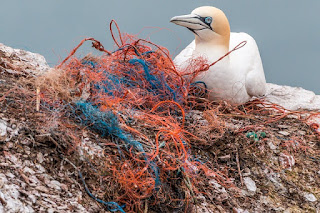The Most Ambitious Project To Rid The World's Ocean Of Plastic--An Update
 |
| Photo Courtesy of Pixabay |
The Ocean Cleanup is the most ambitious project of its kind. The goal is to clean up 50 percent of the Great Pacific Garbage Patch (GPGP), the largest accumulation of ocean plastic in the world. Located between California and Hawaii, it's one of five gyres (circular systems of ocean currents) that accumulate plastic garbage. Once the plastic is retrieved, it's hoped that most of it can be recycled.
The GPGP is twice the size of Texas and contains an estimated 1.8 trillion pieces of plastic with a total weight of about 80,000 tons.
The Ocean Cleanup technology includes passive floating barriers to concentrate and capture the debris. Natural ocean forces are used to capture the debris. Electronics used for monitoring and controlling the system are all solar powered. The system is modular, allowing improvements to be made based on experience and funding.
What's Been Completed?
The successful Mega Expedition to the Eastern Garbage Patch or North Pacific Subtropical Gyre in 2015 demonstrated Proof of Concept. Thirty vessels and 652 surface nets crossed the patch in parallel collecting plastics and data to gauge the actual size of the problem. A multi-level trawl was also deployed, measuring plastics at 11 different depths.
In late 2016, The Ocean Cleanup used a C-130 Hercules aircraft, dubbed "Ocean Force One," outfitted with advanced sensors and cameras to complete an aerial survey of the GPGP. They measured and mapped megaplasitcs, or large plastics. Of special concern were "ghost nets," huge conglomerations of discarded fishing nets and lines.
What's Happening Now?
In September, 2018 an important milestone was reached--launching System 001, also called "Wilson." This first cleanup system was launched from San Francisco Bay and reached the deployment location on October 16, 2018.
At this time, Wilson is attracting and concentrating plastic, but not yet retaining it. The possible solution may involve adjusting the speed of the system. Testing, monitoring, and adjustments are being made to improve the system in the field.
With a huge project like this, such an adjustment period should be expected. I greatly admire the vision and effort involved The Ocean Cleanup.
Science and Technology
The Ocean Cleanup team conducted in-depth research on ocean debris and potential technologies that could be used for removing it. Some of that research was published in a number of technical presentations, peer-reviewed journal articles, and a book. If you'd like to delve into the technical aspects of this projects check out the Scientific Publications page.
Want to Keep Track of The Ocean Cleanup?
Updates are available on The Ocean Cleanup website. You can also follow them on Twitter @TheOceanCleanup and on Facebook. You can track Wilson on a map as well.
This is a fascinating and very important project. I hope and wish for its great success, and for a future of clean oceans. In the meantime, please recycle or properly dispose of your plastics. Most of the plastic in the GPGP came from debris in rivers, that left on beaches, or improperly disposed fishing gear.
 |
Rainbow Over Jacksonville Beach
Photo by Donna Kaluzniak
|



Comments
Post a Comment